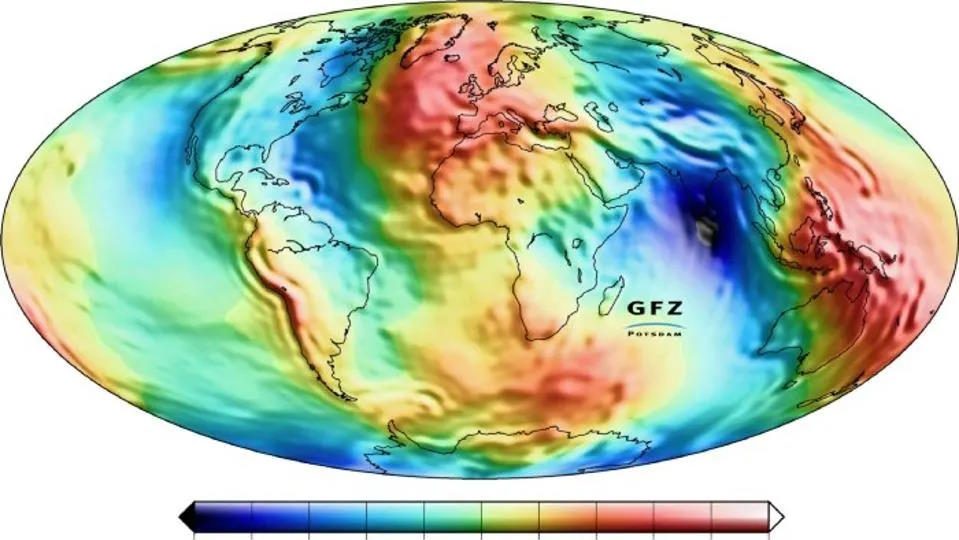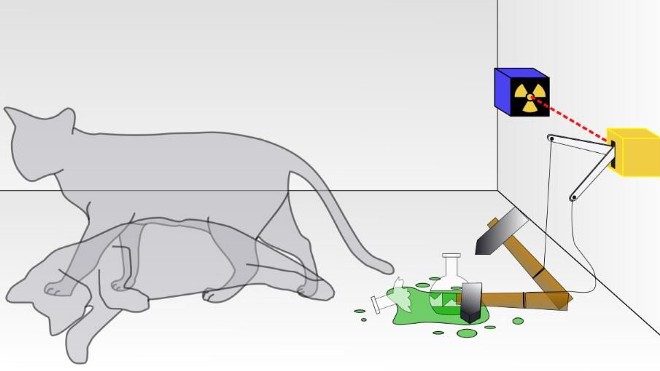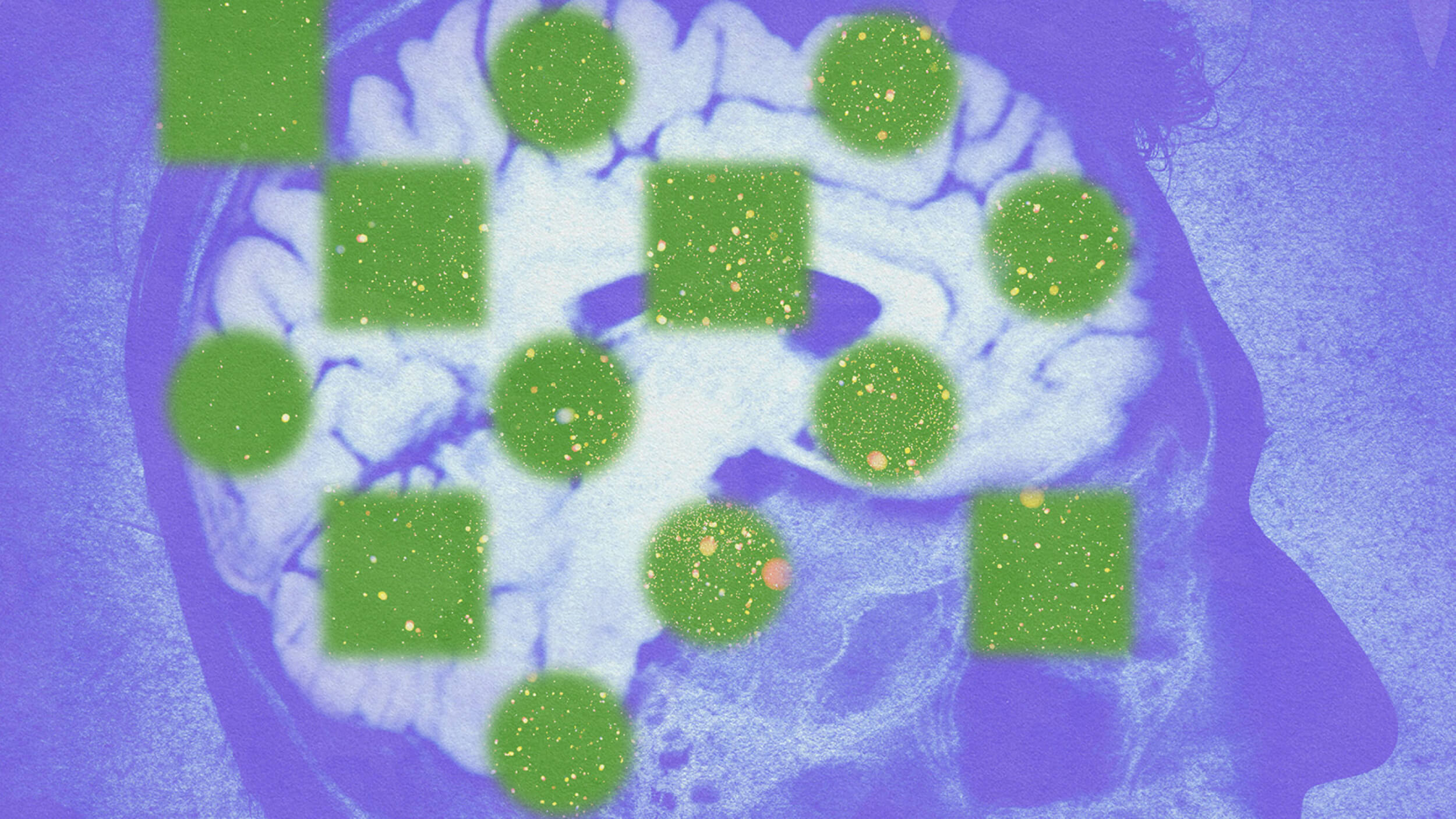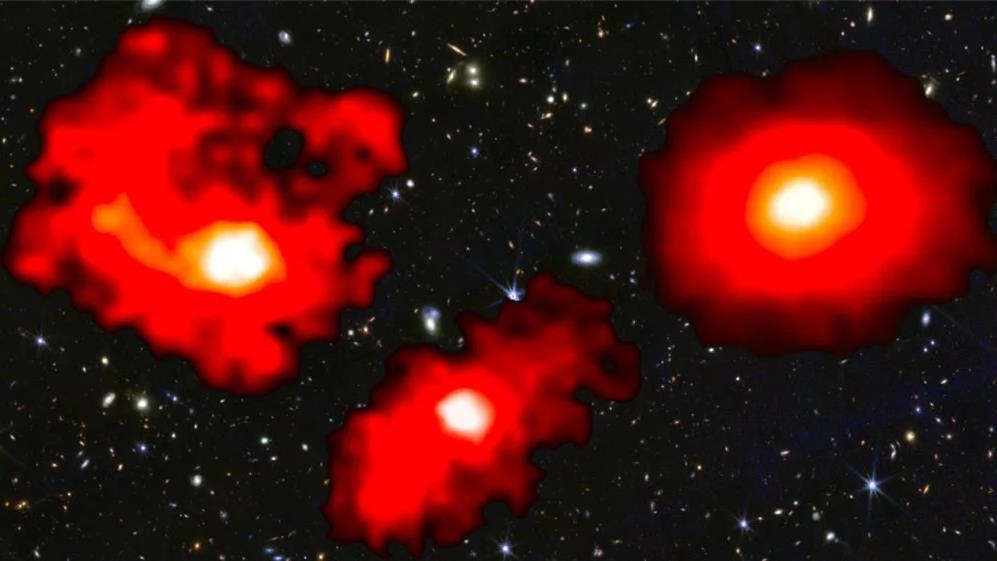10 thoughtful insights about the great cosmic unknowns
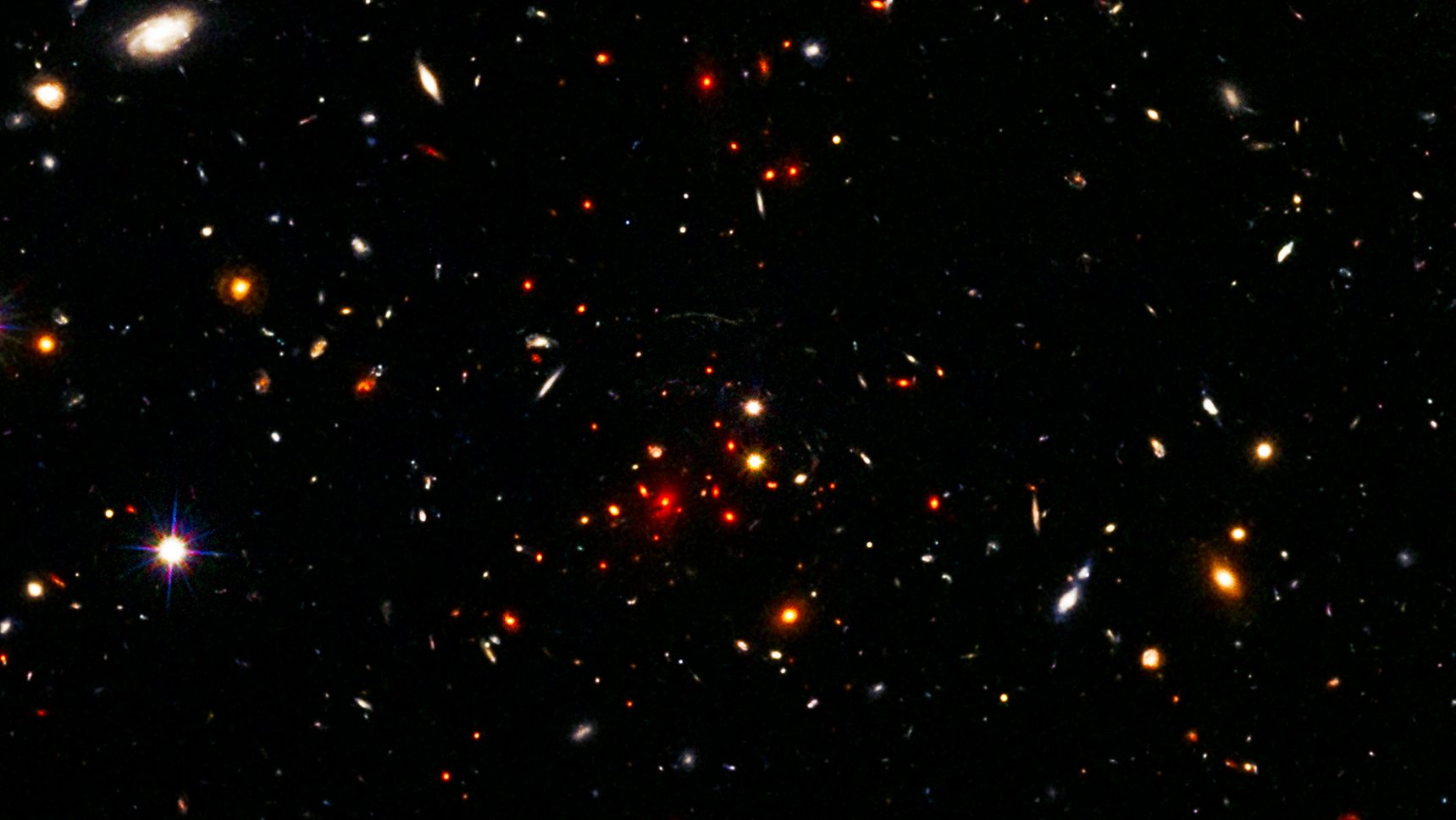
- Over the course of the 20th and 21st centuries, humanity has begun to piece together a coherent, comprehensive picture of all that exists in the Universe, from how it all began to how things grew up to how they got to be the way they are today.
- Although we’ve learned so much, a number of very large, even existential questions loom: what are dark matter and dark energy, how did matter come to dominate the Universe, are there extra dimensions, and is gravity truly quantum in nature?
- Rather than offer answers, astronomer Kelsey Johnson invites readers to think deeply about these ideas themselves, while leading them down the path of how scientists conceptualize these issues. These insights complement her new book, Into the Unknown.
When it comes to understanding the entire Universe, there are impressive lists one can make about both what we do and what we don’t yet understand, at least, in a provisional sense. Modern science, particularly with a view to the theoretical and experimental/observational advances of the 20th and 21st centuries, has made sense of an enormous number of details in our cosmic past. We understand that:
- our Universe is expanding,
- that it can trace its history back to a hotter, denser, more uniform past,
- with the earliest phases describable by a hot Big Bang,
- which itself was preceded by a phase of cosmic inflation,
and that all that we see and experience today — stars, galaxies, planets, moons, the cosmic web, and even life itself — has arisen in the aftermath of these impressive events in our shared history.
As impressive as these cosmic “knowns” are, there remains much to still explain. Why do the fundamental constants have the values that they do, and are there any alternative options for them? What are the mysterious dark matter and dark energy components that seem to make up the majority of our Universe? How did we come to be made of matter, and why isn’t there an equal amount of antimatter? Why is there “something” instead of “nothing” in our Universe at all? And, especially relevant to curious non-scientists, how does one responsibly grapple with these great cosmic unknowns where no one, not even the smartest experts today, knows what the ultimate solution will turn out to be?
In her wonderful new book, Into the Unknown: The Quest to Understand the Mysteries of the Cosmos, astronomer Kelsey Johnson, former president of the American Astronomical Society, dives deeply into all of these issues and more. Here are the thoughtful, insightful highlights that sprang from a recent interview with her.
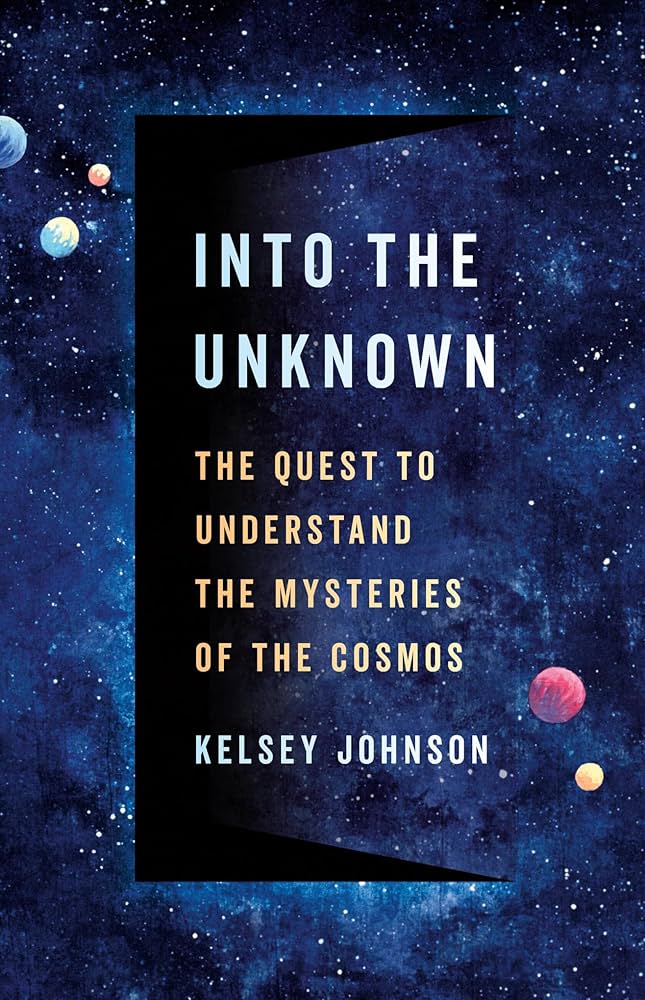
Ethan Siegel (ES): Kelsey, after reading your book, I was delighted to find out that it began with an invitation to, as you put it, “Forget what you think you know about science.” What misconceptions do you think most people have about what science is and how it works, and how has your conception of the scientific process changed as you’ve progressed in your career to become a world-leading astronomer?
Kelsey Johnson (KJ): Well, to be fair, how many active scientists does a typical person know? I absolutely get where misconceptions about science come from, and they can be hard to kick without real exposure to how scientists really work. I am sure I have lots of misconceptions about, say, airline pilots, even though I fly on planes with confidence, just as I think many people use the results of science without much thought and often while holding on to misconceptions.
My sense is that many people have a perception of science rooted in whatever experiences they might have had in school—which tend to be rigid and formulaic (sound familiar?), sort of the equivalent of learning spelling and grammar, or practicing scales on a musical instrument (and for the record, I did not enjoy any of these things while I was in school, although I did love playing music).
Students often leave their science classes with the impression that science is all about memorizing facts, knowing how to solve equations, and doing “experiments” that literally millions of other people have done before and to which there is a “right” answer. The essential nature of science is completely lost in experiences like this. When it comes to science, memorizing facts, knowing how to solve equations, and doing so-called “experiments” (that are in no danger of uncovering anything new) are the equivalent of learning spelling and grammar, or learning musical scales. But if that is all you ever do, you completely miss out the beautiful things that those skills enable, and the same is true for science. Yes, you need the basic skills in science, but progress in science is dependent on curiosity and creativity, which I fear is completely lost in most classrooms.
Over my own career, and seeing how significant advances happen in science, I have grown into an appreciation of how important it is to challenge ourselves by asking “what if…?”, which can be uncomfortable when there is a canon of inherited thinking on a topic. In my early career I generally assumed that people smarter and more experienced than me had good reasons for ruling out the “what if” lines of thought. To be sure that was (and is) at least sometimes true, but if we shy away from asking “what if” questions for fear of looking naïve, we prune off entire lines of thought before we’ve allowed ourselves to see where they lead. Sure, maybe they are dead ends, but the “worst” case scenario is that we can grow our knowledge and understanding in the process of exploring the idea.
At this point in my career, and with a lot more experience on the front lines in science, I am leaning more deeply into asking “what if” questions and seeing where they lead. Being firmly in middle age does come with some benefits, and one of these benefits is a willingness to embrace being naïve as an opportunity to learn.

ES: One common theme that recurs in astronomy and astrophysics is the notion that we have to rethink what we know. Or, if I’m being more precise, we’ve had to rethink what we assumed we had accurately known, but that new evidence later showed cannot be the full story. In your book, you discuss how “knowledge” is where what we believe, what is true, and what is justified all overlap. Can you explain how our common use of “I know…” in everyday conversation differs from how a responsible scientist would talk about scientific knowledge?
KJ: “Knowledge” is a word we throw around with a lot of casual imprecision in daily life, and I would argue that we tend to greatly overestimate the number of things we truly “Know” with a capital K. I think most normal people would like to think there is a large overlap between what they believe and what they know, but we all have to admit that surely there are things we believe that are not true, and conversely things that are true that we don’t believe. Thus, often when we use the word “know”, what we really mean is, “I really strongly suspect based on justifications that I am familiar with so far,” and English just doesn’t have a great word for that.
When we take a step back and ask why we believe something, we get to the justification piece, which is at the core of empirical inquiry (aka science). Some justifications are better than others; some sources of evidence are more robust, and large amounts of evidence from different sources can build a reasonably solid case. If we build up enough evidence from robust sources, scientists can reach a level of confidence that we might call “knowledge” (with a lower-case k). But in science we must always be open to the possibility that the next experiment that tests a theory in a new way or under different conditions might put a crack in our “knowledge”. This willingness to revise what we believe to be true is fundamentally important to making progress in science (and I would argue progress in the rest of our lives too).
I will admit to being entirely inconsistent in how I think of “knowledge”; intellectually, I lean toward believing we can never truly Know (with a capital K) anything—in terms of epistemological positions, this places me firmly in the realm of what is known as “global skepticism.” On the other hand, I clearly go through my daily life as though there are things that I “know” (with a lowercase k), because after all there is a need to be practical and proceed with our best understanding of reality.

ES: You take on a very big question — the question of where the Universe and everything in it comes from, or alternatively, why there’s “something” instead of “nothing” — relatively early on in your book, relating a story where your then four-year-old daughter asks you about the origin of water, and noting that she makes a dissatisfied “crumple face” when your answer isn’t getting to the heart of her question. Is the question of our ultimate cosmic origins, or why there’s something instead of nothing, still something that makes you make a crumple face, or have you made peace with the limited amount of knowledge we’ve gathered in our attempts to ultimately answer perhaps the biggest of all questions?
KJ: I am not sure that I am capable of making peace with the “Why there is something instead of nothing?” question, even if I wanted to. To be sure, the answer may well be beyond the abilities of human cognition; after all, our DNA is only about 1.2% different from chimpanzees; do we really think our brains have reached the summit of cognitive ability? The answer to the something-from-nothing question may be beyond the limits of science, but I’m not ready to give up and assume it is out of reach. I think the drive to comprehend the universe is too deeply part of what it means to be human. Given that this has been one of the biggest mysteries vexing humanity for millennia, even if it gives me “crumple face,” I can’t not think about it.
I also think it is important for us to give ourselves permission to inhabit a space of existential curiosity, without dismissing this curiosity as pointless just because there might not be an answer. Being in this space can be uncomfortable, but I think it is worth it to embrace that discomfort – not unlike a difficult hike through beautiful terrain, the discomfort of this existential space can provide some wondrous views, and in the end we will be better off for having taken the journey.

ES: You consider the possibility of extraterrestrial life in the Universe, and while you manage to remain agnostic about what we don’t yet know, the majority of the news that comes out about extraterrestrials, even from members of the scientific community, are highly dubious reports of “we’ve found possible signatures of alien life” somewhere. Because your book is written primarily for non-experts and non-scientists, what skills would you like to see people arm themselves with to prevent them from falling prey to extraordinary claims that are too often made without equally extraordinary evidence to back them up?
KJ: I get where people are coming from—the discovery of ET life would be one of the most extraordinary events in the history of humanity, so I think there can be a real bias toward wanting this to be true. To be clear, if ET life of any kind exists, it is most likely to be microscopic, and not “intelligent” (as we humans would define it). If we find any solid evidence of ET life, I will be reveling in the discovery along with everyone else. But I also know how easy it is for us humans to be duped. As is always the case with confirmation bias, the more we want something to be true, the more skeptical we should try to be. Reports of actual “intelligent” ET life visiting Earth elevate the need to be aware of our biases and justifications to an even higher level.
Our brains are great at taking shortcuts in logic, and it is important to be aware of the many ways our brains and biases can fool us. As the late physicist Richard Feynman is quoted as saying, “The first principle is that you must not fool yourself, and you are the easiest person to fool.” I would like to think that most people don’t want to be fooled, however, thanks to confirmation bias, we are real suckers for gravitating to sources that support what we believe (and ignoring those that don’t).
If we don’t want to be fooled, we have to pay close attention to how strong evidence is and how likely other options or scenarios are. For example, because of something called “availability bias,” we are naturally most likely to think of explanations that readily come to mind. And thanks to Hollywood, ET life always seems to readily come to mind when, for example, there is an unidentified aerial phenomenon. If we had never heard of ET life (and hadn’t been exposed to countless TV shows, movies, and books about it), what possible explanations might come to mind? Objectively, lots of other things are possible—and in many cases far more likely—than ET life. So, whenever we are tempted to jump to a conclusion of “ET life” from “something weird” happening, we really need to pause and take stock of the evidence and what conclusions we can draw from it. For example, somebody’s uncle’s coworker telling a compelling story about being abducted by ET life has alternate explanations that are probably more likely than ET life existing, traveling across the galaxy, and abducting a human.
All of that being said, someday we may well find incontrovertible evidence of ET life. Yes, our skeptical radars should be on high alert, but if the evidence passes muster, I (along with legions of scientists) will be eager to understand and learn what we can.

ES: As you touch on the mysteries of dark matter and dark energy, I can’t help but feel that there are so many more direct probes of dark matter and its properties, from individual galaxies to groups and clusters of galaxies to colliding galaxy clusters to the cosmic web, the cosmic microwave background, and more, than there are of dark energy, which seems to only reveal itself when we look at large populations of very distant objects. Do you feel that we’re closer to understanding the nature of dark matter than we are the nature of dark energy, and what “next step” would you ideally love to take to better understand their natures?
KJ: I totally agree, and I would be shocked if I don’t have to revise the section in the book on dark matter soon. But then again, every year for the last decade or so, I’ve been thinking I would need to revise my course material on dark matter by the next year, and yet here we are in 2024 (more than 50 years after dark matter was discovered by Vera Rubin), with only a growing collection of potential solutions that we have ruled out. That being said, there are a number of promising experiments happening now and on the horizon that might crack the dark matter mystery… any day now.
As you suggest, dark energy is on a whole other level of mystery, and we have very little traction with the observations in hand. I mean, trying to understand something in the universe that doesn’t appear to interact with light in any way is a real challenge to observations, and we don’t have a lot to go on besides observations telling us that dark energy is getting stronger with time. We have some hope that with the new Rubin Observatory coming online soon, we might be able to at least test some predictions for the behavior of dark energy. But our ideas of what dark energy might be are still rather more speculative than the ideas for dark matter. Cracking this mystery will take major leaps in both observations and theory, which in turn will rely on new technologies and theoretical frameworks.

ES: When you discuss black holes, you relate a very personal story about an important exam you took while you were still a student and talk about how you spent an inordinate amount of time being frustrated with a particular problem you couldn’t solve, only to realize that you had misread the question and were trying to solve an impossible problem, rather than the (relatively easy) problem that you were actually being asked to solve. If you could go back in time to talk to young, pre-exam Kelsey, what advice would you have given your younger self that might have been valuable to you at the time?
KJ: Ooof. That was a rough exam. I think my experience with that particular exam had a lot to do with my own expectations, and expectations are powerful. I debated sharing this story in the book but decided to include it because I think we tend to not talk a lot about our weakness and failures, which could leave an outside observer (or prospective astrophysics student) thinking things are supposed to be easy. And if things aren’t easy, it is easy to think one doesn’t belong. I would maintain to this day that I was one of the slowest students in my physics class, but I managed to convince myself that what I lacked in innate intellectual ability, I could make up for with grit and perseverance. I have also come to realize that one of the reasons I struggled was that I just saw things from a different perspective and approached problems differently. At the time, this made me feel like I didn’t belong, but now in middle age I’ve learned to see my tendency to approach things differently as an asset, and I wish I could share that lesson with the pre-exam Kelsey.
When I work with students who have convinced themselves that they are bad at math or science, I think a lot about where this insecurity comes from. What would it take to build their confidence to the point where they truly believed they could succeed? How can I convince them that they have important talents that science needs, especially if those talents can’t be measured by physics exams? This is tough, and building confidence can require careful, diligent work, and I think far too often students like this get left behind even though they might have amazing insights or creativity to offer the field.
But, then again, I am pretty sure that the young pre-exam me wouldn’t have believed the now middle-aged me. Sometimes wisdom has to be hard-won to be internalized.
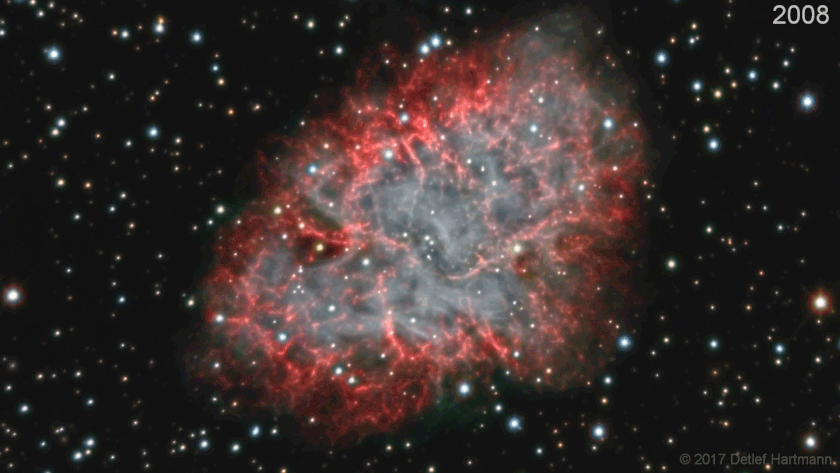
ES: In your book, you ponder the nature of time, and point out that while we all have a fairly concrete vision for what “space” is, and can envision the three familiar dimensions of space in our minds without too much difficulty, most of us have a much harder time picturing “time” in our minds, even though it too is a dimension, and there’s only one of them. Was there ever a point in your own personal past where you had an “a-ha!” moment, and you felt that you understood time, and its nature as a dimension, a little bit better after that event?
KJ: Have you ever played around with autostereograms—the eye puzzles that hide an apparent 3D image in a 2D image of colored dots? [ES note: I am one of the people who has never been able to successfully see a “magic eye” picture, no matter how hard I’ve tried.] When I try to do these eye puzzles, much of the time I feel like I can almost—but not quite—see the 3D image, and it is hiding just on the edges of my perception. That is how I feel about the dimension of time; I can almost but not quite get a mental hold on it. I find that I need to try to visualize time to really think about it as a dimension, but it isn’t clear to me that our visual cortices are up to this task—probably nowhere in our evolution was the ability to visualize time important for survival. I am also not sure that my working memory can hold all the concepts and visualizations simultaneously, which is one of the limits in human cognition that has a big impact on our ability to carry about abstract thinking. When it comes down to it, I am not sure that the human brain is actually capable of grasping the true nature of time at an intuitive level, but that doesn’t keep me from trying!
I know this will sound whacky (and probably it is), but when I am thinking about other dimensions (including time), I have a few different mental warm-ups to try to get my brain in gear. One of the mental exercises I will often do when trying to think about time is imagine I am riding along with a photon, which is of course moving at the speed of light as photons are wont to do. Because photons move at the speed of light, that means they don’t experience time, yet somehow, they still experience space—so what would that experience be like? In this particular case, I imagine time and space switching roles, and I try to think through this. To be sure, thought exercises like this are mentally uncomfortable, but I have come to believe that it is important to embrace this feeling of mental discomfort, which is a sign that our brains are working to create new schema, which will ultimately enable new insights.

ES: Most astronomers, at least in my experience, don’t have very much use for the notion of extra dimensions, as there are no observable signatures that indicate the existence of anything beyond our three spatial (plus one time) dimensions. You’re not like that, however; you remain curious even about scenarios that seem firmly divorced from what the science of astronomy, even in principle, can shed light on. Can you share with us what value you find in pondering not only the unknown, but potentially the unknowable, and why the notion of “hidden” extra dimensions remains such a compelling one for you?
KJ: I think whenever we come to the borderlands of science, where things may not be empirically testable now (and may never be), scientists are inclined to throw up their hands and walk away. Sometimes scientists are inclined to just dismiss such an idea as nonsensical or crazy. In this vein, probing extra dimensions that appear to be inaccessible to us (at least for the moment) is a particular challenge for scientists, who, as a rule, are fond of empirical inquiry. But if we are being intellectually honest, and we want to keep our hubris in check, we have to admit that there are possibilities beyond those that we can test empirically (at least with current technology). Unless we want to argue that our current physical understanding, mathematical frameworks, and technological capabilities are the pinnacle of what is possible, we need to be mindful of what may or may not be possible in the future.
A positivist might argue that it doesn’t matter if other dimensions exist if they have no influence on our universe. This position is hard to argue with, but that doesn’t stop me from arguing. If we assume that either there are no other dimensions or we can’t interact with them, this situation becomes self-fulfilling. Moreover, there are in fact hints of other dimensions that keep popping up in our theories, and as we think more creatively and abstractly, we are coming up with ideas that could help us understand the universe we are part of.
One of the reasons I decided to talk about the possibility of other dimensions in the book is that this concept brings us to the limits of our knowledge, perception, and cognitive ability. My belief is that making transformative progress in science requires people being willing to entertain potentially crazy ideas to see where they lead, as long as we stay grounded in empirical inquiry. To be sure, there are a lot of crank ideas out there, but dismissing an entire area of thought because it is rife with crazy ideas doesn’t mean that there isn’t some genuine truth and understanding to be gained from careful consideration. This goes back to my earlier answer: we have to be willing to ask the “what if” questions or we could miss the greatest advances—we do ourselves a disservice by prematurely pruning ideas because of preconceptions we have about the universe. As long as we are mindful of what is or isn’t testable (or one day might be), I think we are on solid enough ground. One of the paths forward scientifically is to ask ourselves how an idea might be testable—even if it isn’t testable now.

ES: Much has been made about the laws of nature, and in particular that our best understanding of them — the Standard Model for the electromagnetic as well as the strong and weak nuclear forces, plus general relativity as our theory of gravity — has been so successful on practically every experimental and observational front for so long. You strike me, from your writings, as someone who’s dissatisfied with these “approximations” to the rules of reality, and as someone who someday hopes to find a deeper truth and, as a result, a more profound insight into the Universe as it actually is. What is it that compels you to keep searching for a deeper truth when our current best approximation for how things work isn’t failing to describe our observed reality in any measurable way?
KJ: To be sure, modern physics theories do a solid job in many respects (although even our most accepted theories still have problems), but there is a lot more to the story. The universe clearly seems to have rules, but we don’t know their source, where they are encoded, how they inform the universe about what to do, or whether they could have been otherwise. We interpret the rules as they manifest in forces, but the relative strengths of the forces seem totally random, despite a widespread belief among physicists that the forces should be unified. To my mind, the state of our understanding is mediocre at best.
Given that we are embedded in a universe with these laws, and indeed we are a product of them (which also leads to a paradox of self-reference), we are readily lulled into a sense that these laws just are and give them no further thought. To me, just accepting these laws as “the way things are” feels a lot like a grown-up responding, “Because that’s the way it is,” to a child’s question. I find this deeply unsatisfying, and I don’t think I am alone in having a more ontologically oriented mindset—I want to know the true nature of reality, not just what we can measure in a lab.
Even if our current theories did a perfect job of explaining the universe (which they don’t), my belief is that it is imperative to keep in mind that our description of reality should not be conflated with reality itself. Ultimately the laws we infer could just be a projection of a manifestation of a deeper underlying law. A positivist would definitely argue with me on this, and perhaps there is no practical purpose in questioning the nature of reality beyond our ability to observe it. However, equating our perception and reality strikes me as profound hubris, and we risk both misleading ourselves and missing out on deeper truths.
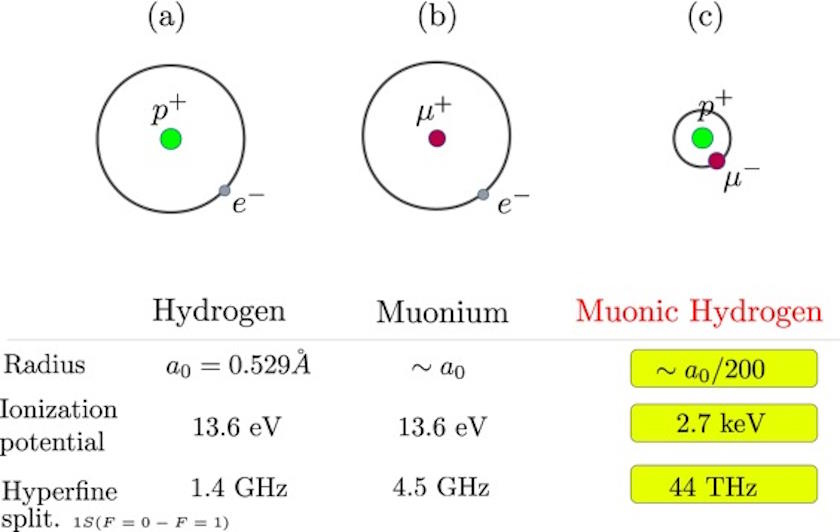
ES: A lot of people have asked (and at least attempted to answer) the question of how finely-tuned our Universe and its laws and parameters are for the existence of intelligent life. It strikes me as quite profound that if we were to change the values of any one of the fundamental parameters — the strength of gravity, the mass of any one of the quarks, the speed of light, etc. — by even a factor of 10 or 100 in either direction, atoms, molecules, planets, and the potential for complex chemistry and life would still persist. But if you changed the mass of the electron by that much, either starlight would easily ionize and break apart any stable molecules, making life unlikely, or electrons would be so tightly bound to their parent atomic nuclei that no chemical reactions would spontaneously occur. Is there any particular parameter or constant that strikes you as particularly finely-tuned so that life is at least admitted as a possibility within our Universe, and are there any lessons you think we should take away from that?
KJ: The fine-tuning debate does a great job of illustrating how complex the ecosystem of our universe is; the various parameters are deeply entwined in a way that enables a place and time for life-as-we-know-it. As with the laws of nature, I think the apparently delicate balance of the ecosystem in our universe is easy to take for granted in our day-to-day lives, but when we stop to think about it, the possible explanations have profound implications.
One key bit of information in the fine-tuning debate that I find is often missing is that we don’t know what range of values the different parameters could have had (and what determines this range to begin with). Without knowing the possible ranges of values, we can’t say which values are particularly fine-tuned. For example, if you have a volume setting on your stereo that goes in integers from 0-10, the chances of having a value of any given number are 1-in-11. But if that volume setting goes from 0-1000, the chances of any given value are commensurately lower. Of course, this just begs the question of why that particular range of values is allowed, so all we’ve done is kick the can down the road.
Among the various parameters that appear fine-tuned, I do want to point out an exquisite property of our universe that I don’t think gets nearly enough attention but is critically important for life-as-we-know-it. Specifically, at the physical and temporal scales we live, our universe appears to be in a delicate balance between order and chaos. To me the balance of the two extremes of order and chaos might be the most simultaneously profound and overlooked. The universe need not be so. If the universe were entirely ordered, everything would follow perfect patterns and symmetries, and nothing interesting (a category in which I include life-as-we-know-it) would ever happen. On the other hand, if the universe were dominated by chaos, there would be little (if any) law and order to reality, with the universe a maelstrom of mayhem. Yet, in the universe we live, we seem to have some tidy physical laws that govern reality hand-in-hand with chaotic behavior.

ES [one last bonus question]: The last big question you ask in your book is, “What is our place in the Universe?” Like a good professor, you never answer this question, but simply invite the reader to think about and ponder the possibilities. If you were to encounter that same younger version of yourself that was faced with that difficult exam long ago, and she were to ask the present version of you, “Kelsey, what is your place in this Universe,” what answer would you give to her?
KJ: In some ways this is the mystery that underlies all the rest, and wanting to know the answer is what led me to astrophysics. I don’t know my place in the universe, and perhaps never will, but I think this quest itself is important and worthwhile. Even if we never find the answer, we stand to gain a lot of insight in the process of trying.
In a very real way, we are fundamentally collections of molecules imbued with something we call consciousness—fluctuations of the universe itself making the universe self-aware. To my mind, this gives us a responsibility, almost an ethical imperative, to try to learn about and understand the universe we are part of.
Kelsey Johnson’s book, Into the Unknown: The Quest to Understand the Mysteries of the Cosmos, released to the world on October 15, 2024, and is recommended to any curious individual who’s interested in pondering the mysteries of the Universe as thoroughly and with as full of an awareness of our own biases as possible.
